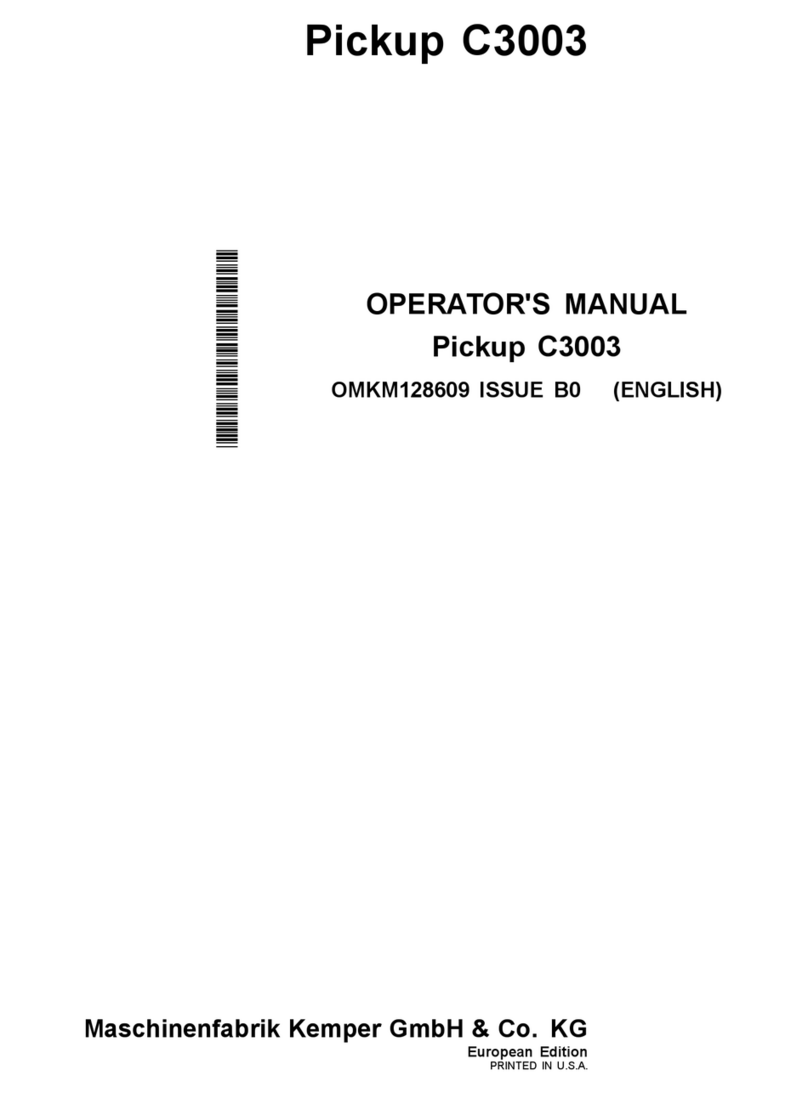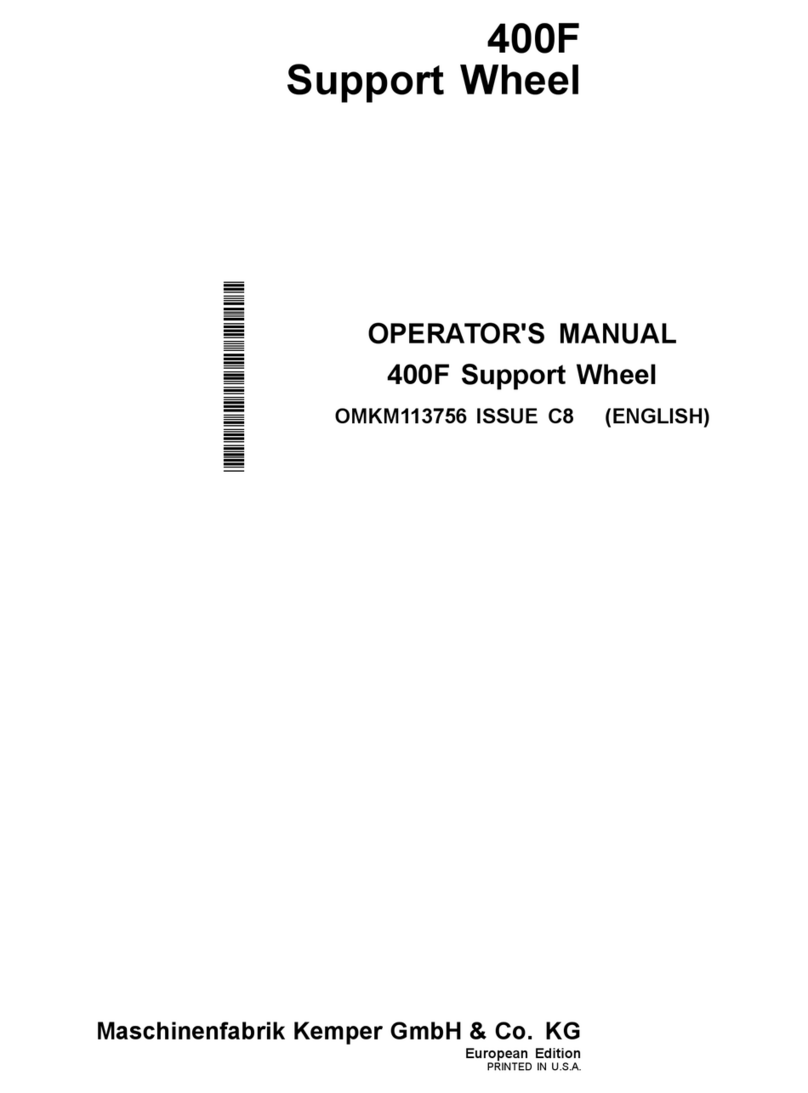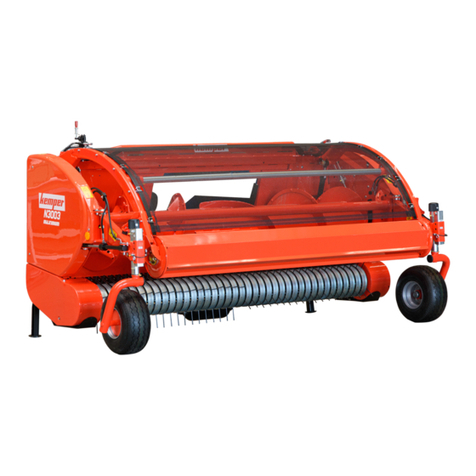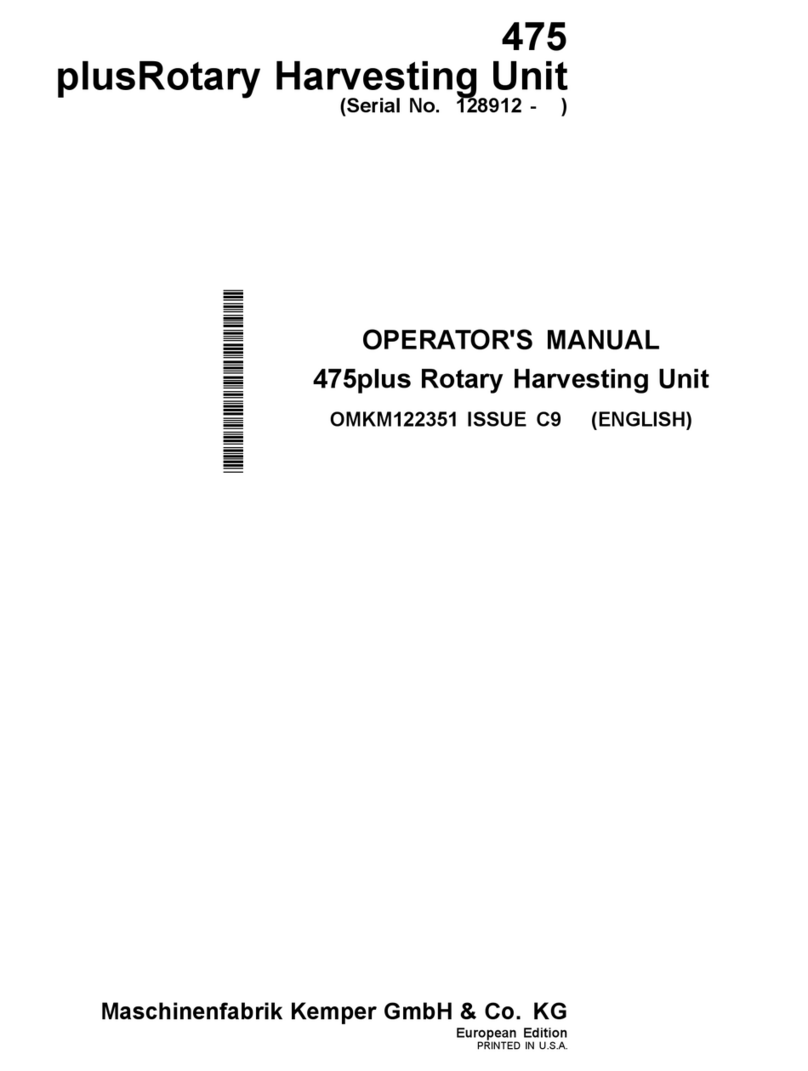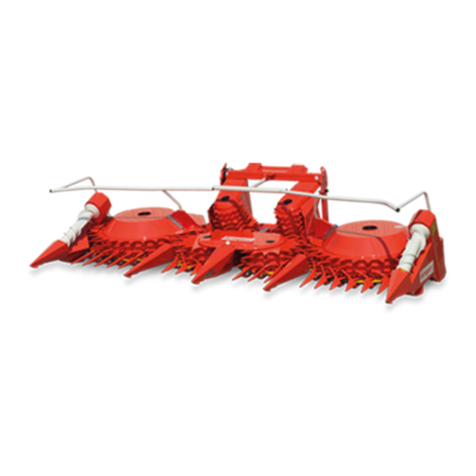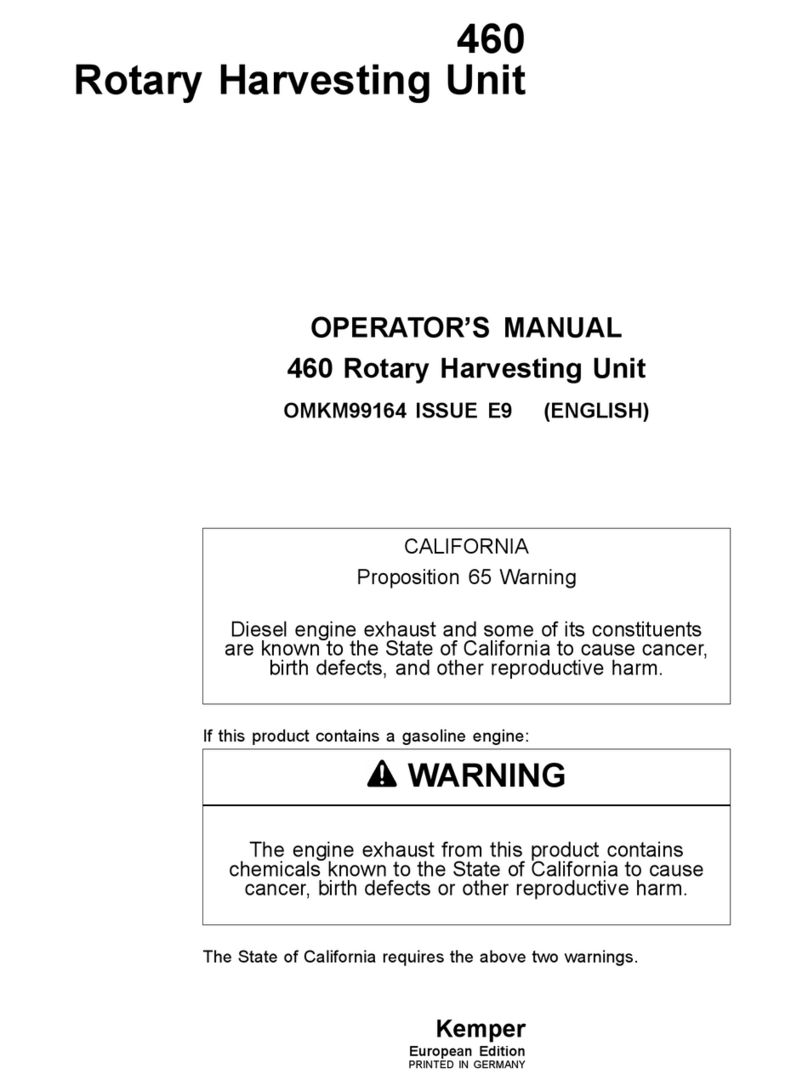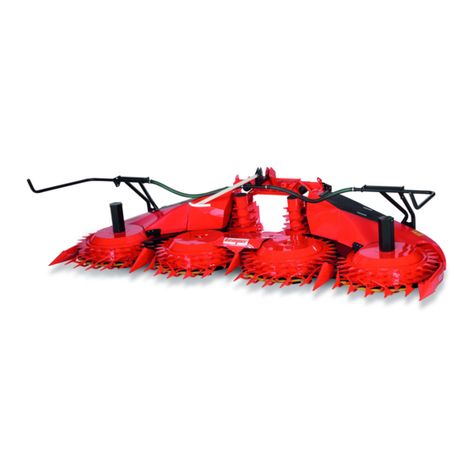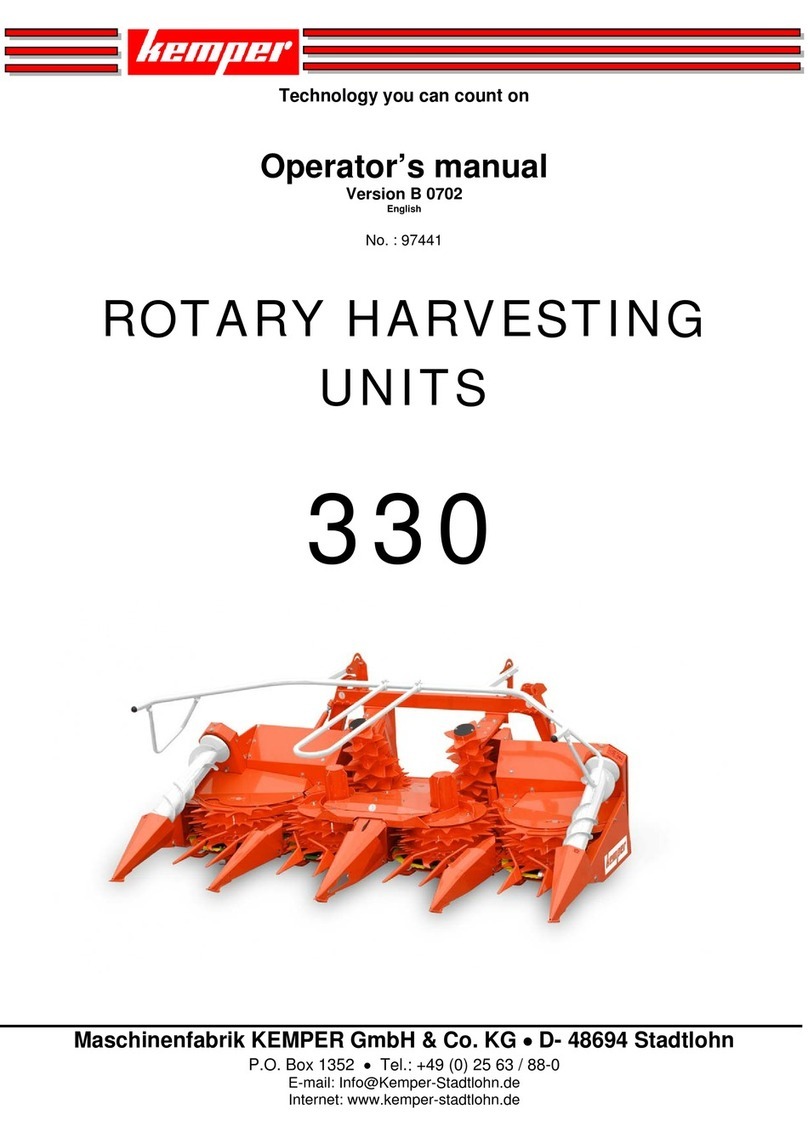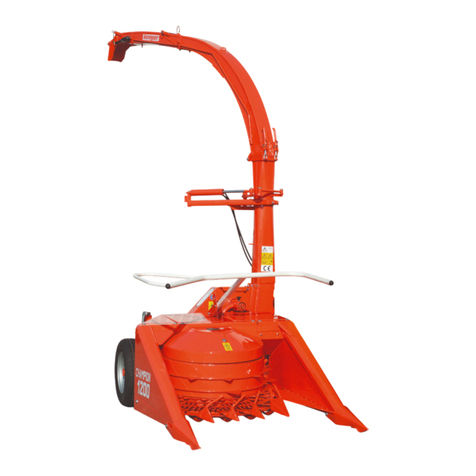
Contents
Page
Fold the Rotary Harvesting Unit .........................35-1
Apply Decal (Rotary Harvesting Units
with Support Wheel).......................................35-1
Driving on Public Roads (Rotary
Harvesting Units with Comfort
Support Wheel) ..............................................35-2
Driving on Public Roads (Rotary
Harvesting Units without Comfort
Support Wheel) ..............................................35-3
Operating the Rotary Harvesting Unit
Rotary Harvesting Unit Method of Operation......40-1
Operating the Rotary Harvesting Unit -
General Use ...................................................40-2
Clear Blockages .................................................40-2
Clear Blockages on CLAAS Forage
Harvesters......................................................40-2
Feeder House Drum Operating Speeds .............40-3
Adjusting Gear Selection with
Multi-Speed Gearbox for CLAAS
Forage Harvesters .........................................40-4
Lengths of Cut and Gear Selection
with Multi-Speed Drive for CLAAS
Forage Harvesters .........................................40-5
Harvesting ..........................................................40-6
Hydraulic System................................................40-6
Troubleshooting
490plus Rotary Harvesting Unit............................45-1
Lubrication and Periodic Service
Service Intervals.................................................50-1
Fluid Grease for Drives.......................................50-1
Transmission Oil.................................................50-1
Coolant for Main Drive Friction Clutch................50-2
Alternative and Synthetic Lubricants ..................50-2
Mixing Lubricants................................................50-2
Lubricant Storage ...............................................50-2
At the Start of Every Harvesting Season............50-3
Use Genuine KEMPER Parts ............................50-3
At the Start of Every Harvesting
Season—Spherical Collar Bolts .....................50-3
At the Start of Every Harvesting
Season—Transmission Mounting
Flange Attaching Screws ...............................50-4
At the beginning of each harvesting
season — adjust latch of the chassis.............50-5
General View of Drives and Oil Levels
on the Rotary Harvesting Unit ........................50-6
Overview of Oil Levels in Input Transmission.....50-7
Every 10 Hours of Operation—Clean-
ers and Blade Rotor Segments ......................50-7
Every 10 Operating Hours—Balance Weights ...50-8
Every 50 Hours—Claw Clutch ............................50-8
Every 50 Hours—Lower Pin of
Hydraulic Cylinder and Pivots of the
Outer Units .....................................................50-9
Page
Every 50 hours of operation—Upper
rollers of the tilt frame (rotary
harvesting units for CLAAS forage
harvesters) .....................................................50-9
Every 50 hours of operation—Lower
rollers of the tilt frame (rotary
harvesting units for CLAAS forage
harvesters) .....................................................50-9
Every 50 hours of operation—Spring-
loaded pins...................................................50-10
Every 50 hours of operation—Axle pins
of the outer units ..........................................50-10
Every 50 operating hours—Fold cylinders........ 50-11
Every 50 operating hours—Latch jaws.............50-12
Every 3 Years—Change Coolant of
Main Drive Friction Clutch ............................50-13
After each harvesting season...........................50-14
Service
Metric Bolt and Screw Torque Values.................55-1
Check Main Drive Slip clutches ..........................55-2
Disassemble Slip Clutch.....................................55-3
Installing New Rotating Blades...........................55-4
Adjusting the Dividers.........................................55-5
Checking Adjustment of Scrapers
(Inner Drums) .................................................55-6
Checking Adjustment of Scrapers
(Outer Drums) ................................................55-6
Check Condition of Cleaners..............................55-7
Cleaning Rotary Harvesting Unit ........................55-8
Storage
Storage at End of Harvesting Season ................60-1
Start of New Season...........................................60-1
Technical specifications
Machine Design Life...........................................65-1
Rotary Harvesting Unit 490plus............................65-1
Sound level.........................................................65-1
EU Declaration of Conformity .............................65-2
Serial Number
Rotary Harvesting Unit Serial Number Plate ......70-1
Serial Number.....................................................70-1
ii 120519
PN=2
